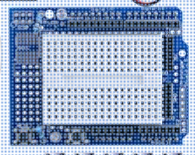Short answer is yes, neutral can and does, but it is not a storage tank at all, you see electrons are every where, within your body, within air and vaccum! indeed they travel better in a vaccum, electricity is the movement of electrons fro any reason, so instead of the neutal pin, you could use a big metal shaft inserted into mother earth.
But I am warning you, do not get so tangled up with the neutral pin, you will confuse yourself in the end. The neutral pin is just a necessity - something to close the circuit with, a sinkhole for our water plumbing.
Also providing electrical power in DC form is troublesome and inefficient, indeed Edison in early days designed, built and operated DC power stations. You may want to google that at your leisure.
So all electricity grids are AC, but our amps and DACs work with DC, so every equipment has a Power Supply Unit or PSU, the job of this section is convert the grid's AC into a clean, stable DC, to provide power to the rest of the system.
A PSU may have multiple sections providing different voltages for different sections.
However your washing machine, fridge or stove happily work on AC.
















